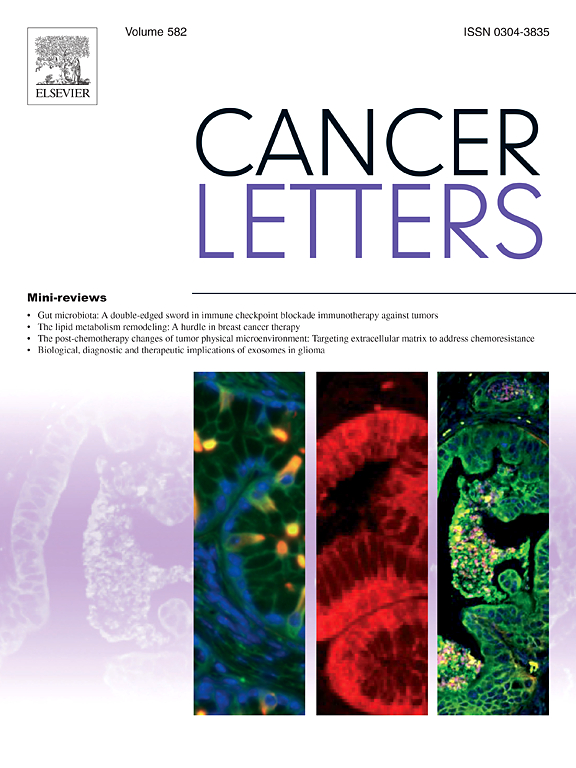A single-cell map of patients with non-small cell lung cancer harboring rare-driver mutations after anti-PD-1 treatment
IF 9.1
1区 医学
Q1 ONCOLOGY
引用次数: 0
Abstract
The effects of the tumor microenvironment the therapeutic efficacy of combining chemotherapy with checkpoint inhibitors in patients with lung cancer harboring rare -driver mutations remain unclear. We utilized single-cell RNA- and T-cell receptor (TCR) -sequencing to explore the immune and stromal cell profiles of 12 tumors and five tumor-adjacent tissues in seven patients with non-small cell lung cancer (NSCLCs) with rare -driver mutations treated with anti-PD-1 agents combined with chemotherapy. A class of highly expanded T -cells, known as GZMK + CD8+ effector memory T cells (GZMK + CD8+Tem), was enriched in both responsive tumors with and without rare driver mutations, suggesting similar anti-tumor immune mechanisms in both cohorts and that high levels of GZMK + CD8+Tem might be associated with effective responses to combination therapy. Non-responsive tumors exhibited a highly immunosuppressive M2-phenotype with enriched macrophages and monocytes. In non-major pathological response tumors, tumor cells interacted with alveolar and M0 macrophages via LAMC2-(ITGA6+ITGB1), possibly leading to M2 polarization. OAS1 was specifically expressed in CHIT1+ and FABP4+ macrophages and promoted macrophage polarization. These findings suggest that combination therapy reprogramed alveolar and M0-like macrophages to a pro-tumor phenotype, creating an immunosuppressive tumor microenvironment that resisted anti-PD1 therapy. In conclusion, GZMK + CD8+Tem is crucial for effective responses, whereas myeloid cells contribute to the immunosuppressive effects in anti-PD-1 therapies for NSCLCs with rare-driver mutations.
求助全文
约1分钟内获得全文
求助全文
来源期刊

Cancer letters
医学-肿瘤学
CiteScore
17.70
自引率
2.10%
发文量
427
审稿时长
15 days
期刊介绍:
Cancer Letters is a reputable international journal that serves as a platform for significant and original contributions in cancer research. The journal welcomes both full-length articles and Mini Reviews in the wide-ranging field of basic and translational oncology. Furthermore, it frequently presents Special Issues that shed light on current and topical areas in cancer research.
Cancer Letters is highly interested in various fundamental aspects that can cater to a diverse readership. These areas include the molecular genetics and cell biology of cancer, radiation biology, molecular pathology, hormones and cancer, viral oncology, metastasis, and chemoprevention. The journal actively focuses on experimental therapeutics, particularly the advancement of targeted therapies for personalized cancer medicine, such as metronomic chemotherapy.
By publishing groundbreaking research and promoting advancements in cancer treatments, Cancer Letters aims to actively contribute to the fight against cancer and the improvement of patient outcomes.
 求助内容:
求助内容: 应助结果提醒方式:
应助结果提醒方式:


